The knockout stage of the 2019 FIFA Women’s World Cup is well underway with Germany comfortably beating Nigeria, and Australia marginally losing out on penalties to Norway. Today, hosts France take on Brazil in their quest to win their first ever Women’s World Cup at home. France topped Group A, gaining nine points from the possible nine. Brazil, who are also hungry to get their hands on the trophy for the first time, were the best third-placed team in the group stages, finishing with six points. This tactical analysis will look at how both teams are expected to set up, where they intend to hurt the other, and key matchups during the match.
Expected Lineups
Brazil
Coming into this tournament, Brazil had a set 4-4-2 formation that they tended to stick to for most of their games. Head coach Vadão has mostly stuck to this formation throughout the tournament, playing the very similar 4-4-1-1 against Italy.
Brazil’s 4-4-2 relies on playing out from the back with centre-backs Kathellen Sousa Feitoza and Mônica Alves, attempting to get the ball to one of their fullbacks, either Letícia Santos or Tamires. Once that happens, the fullbacks will attempt a long pass upfield to one of the forward players, Marta or Cristiane Rozeira. These forward players will look to combine with the wide players to create goal scoring opportunities. The two box to box midfielders will look to make late runs in the box while in possession to overload the opposition, numbers-wise. In defence, they’ll drop deep, along with the rest of the team, and defend tightly.
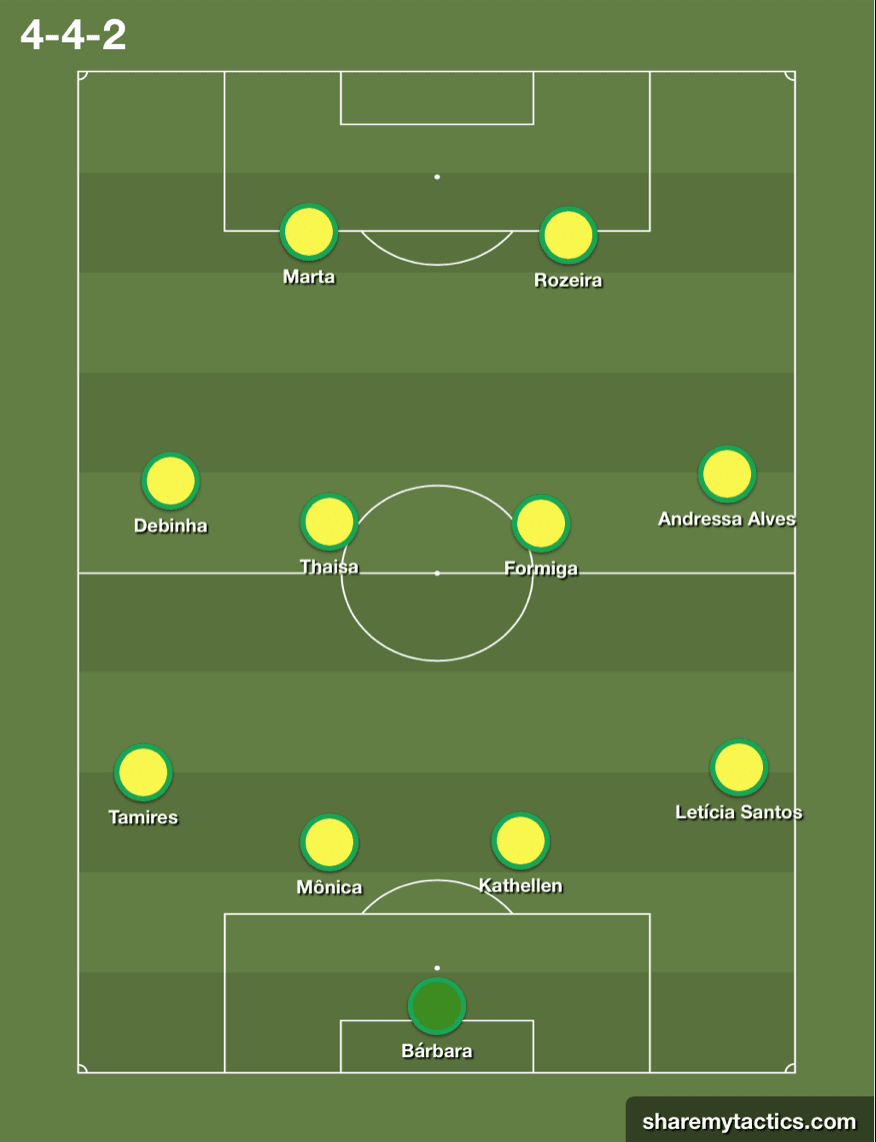
France
Corinne Diacre has mostly stuck to the same formation when it comes to France. Some of France’s key players were rested against Nigeria because they had already guaranteed qualification to the next round, however, these players will likely return to the starting XI and feature against Brazil. Diacre’s 4-2-3-1 sees a back four of Marion Torrent, Griedge Mbock Bathy, Wendie Renard and Amel Majri, a midfield two of Amandine Henry and Élise Bussaglia, and a front four that includes Gaëtane Thiney, Delphine Cascarino, Eugénie Le Sommer, and Valérie Gauvin. This tournament has also seen Diacre use a 4-4-2, with Thiney, who is usually deployed as a central attacking midfielder, playing as a striker who drops a bit deeper.
Both systems have similar attributes, yet it’s clear that the buildup to create chances is different. The 4-2-3-1 relies on France playing on the counter-attack. They press the ball off the opponent, and rely on pacey fullbacks, and inside wingers to create chances for goal scoring opportunities.
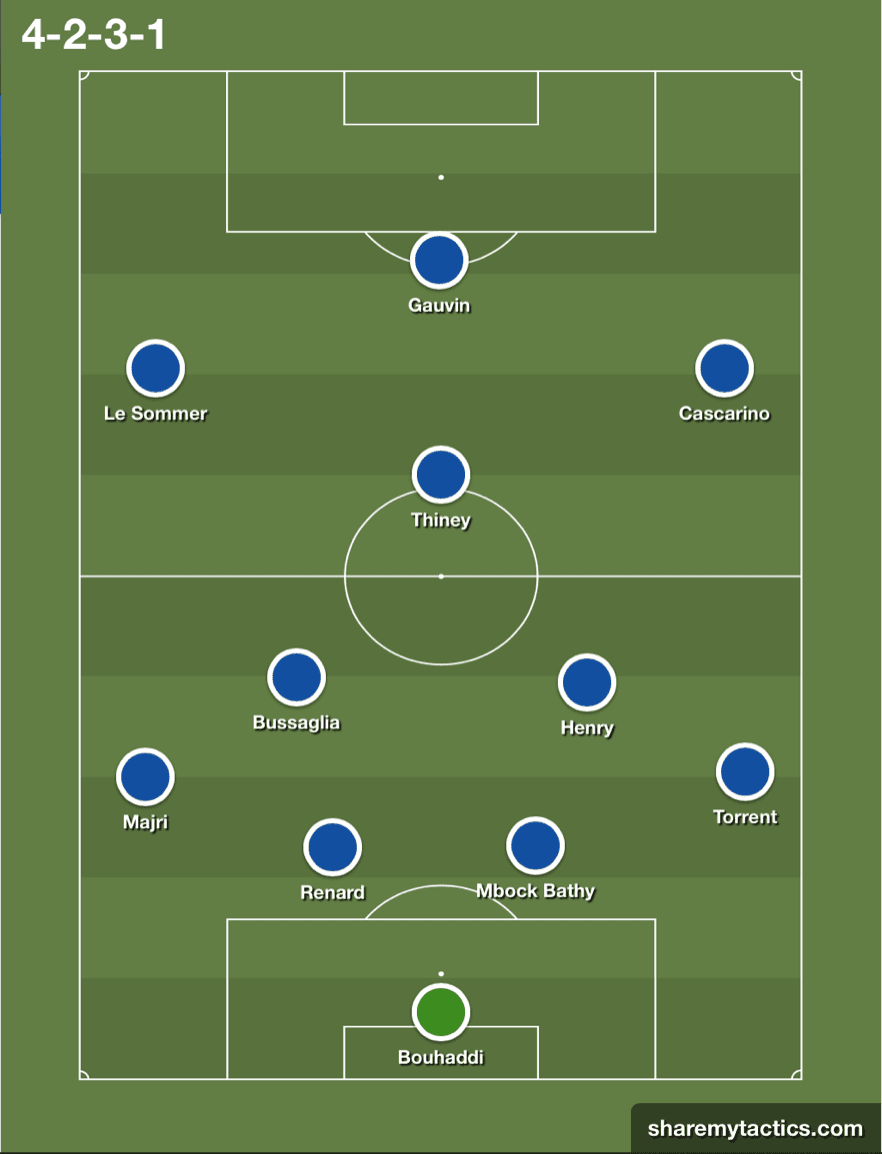
The 4-4-2 is more compact, and a less explosive way for France to play. Rather than play on the counter-attack, Thiney drops between the lines of the opposition’s defence and midfield to receive the ball and interplay with the wide players.
The way in which France play usually depends on how their opponents’ set-up. With Brazil often playing a 4-4-2 or some variation of that formation, France will most likely play the 4-2-3-1, hoping to counter Brazil’s compactness. France’s 4-4-2 may only make an appearance if they are defending a lead late in the game.
France as Favourites
France come into this tie as clear favourites. Expectations are high, as the golden generation they currently possess are expected to finally attain some silverware after just falling short at the previous Women’s World Cup and the Women’s Euro. They have one of the best teams in the tournament, and will likely expect themselves to make the final. They will be aggressive with Brazil, hoping to score early. Brazil, whose average squad age is twenty-eight, have one of the oldest squads of the tournament. France’s plan will be hoping to use their effective pressing game to frustrate Brazil and tire them out, forcing them into long balls, and eventually sloppy play.
Amandine Henry is the key that runs France’s midfield. Her tactical awareness showcases that she knows exactly when she’s free to roam forward, and when she has to stay back, protecting her defence. She’ll be aware of Brazil’s runners from midfield, and be closely marking them, ensuring they do not get any opportunities.
Henry also leads France’s press when in midfield. She, along with other midfielders will aggressively press, and then pass out to the wide areas as an outlet to start the attack. As well as being the link from defence to attack for France, she is extremely press-resistance and confident with the ball at her feet. As captain, her leadership in a tough game like this will be important, and Brazil will struggle if they do not neutralize her.
How Brazil can Overcome the Odds
Brazil, while the underdogs, do have their strengths, and France must be careful to not underestimate them. Brazil faced a team who attempted the 4-2-3-1 shape, with a pressing system in Jamaica during their first match of the group stages. Jamaica, while a far less experienced team, played very similar to how France plays. Brazil though used Jamaica’s press to their advantage. Any team that presses will leave spaces, the whole idea of pressing is a high risk, high reward system. Brazil found these spaces that Jamaica left, and knew all they had to do was get past the pressure Jamaica were forcing.
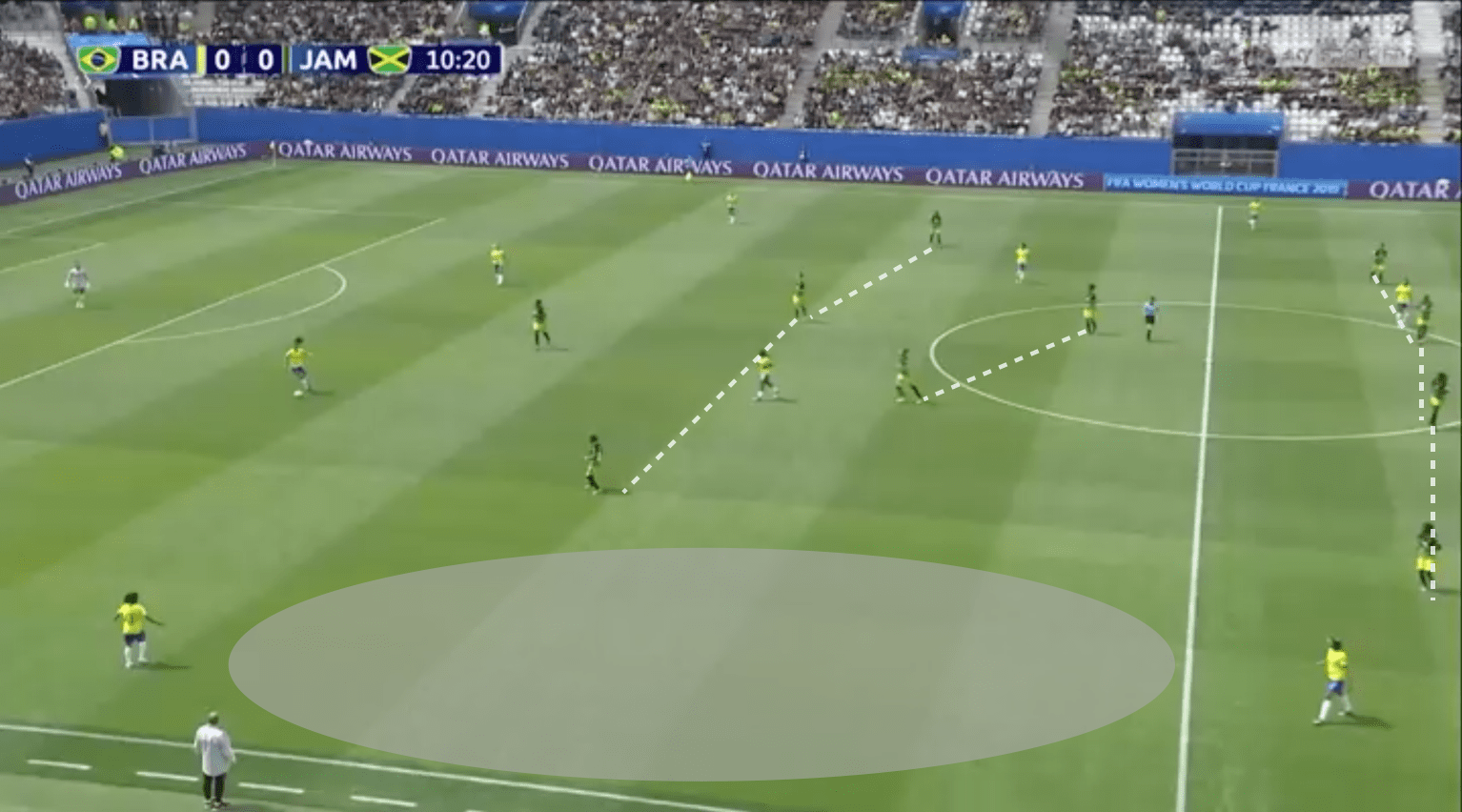
With several very technical and skillful players, Brazil were easily able to cut through Jamaica’s press by using close dribbling skills, feints, flicks, smart ball control, and their overall technical ability.
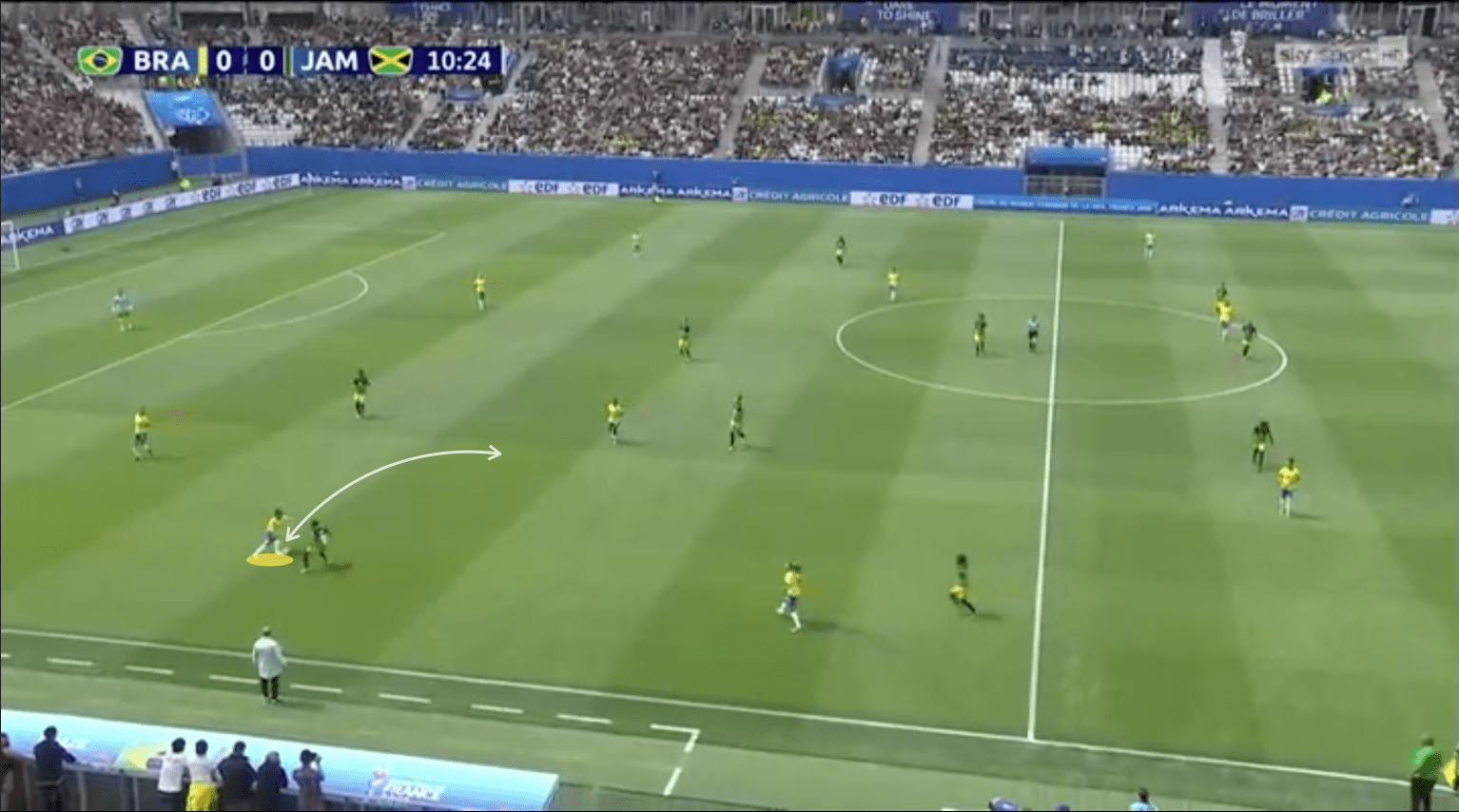
Once they bypassed the press, Brazil overcame Jamaica’s high line by using long balls by switching the flanks. One of the forward players would run into the empty space left by the high line and receive the ball, giving them clear chances to score goals.
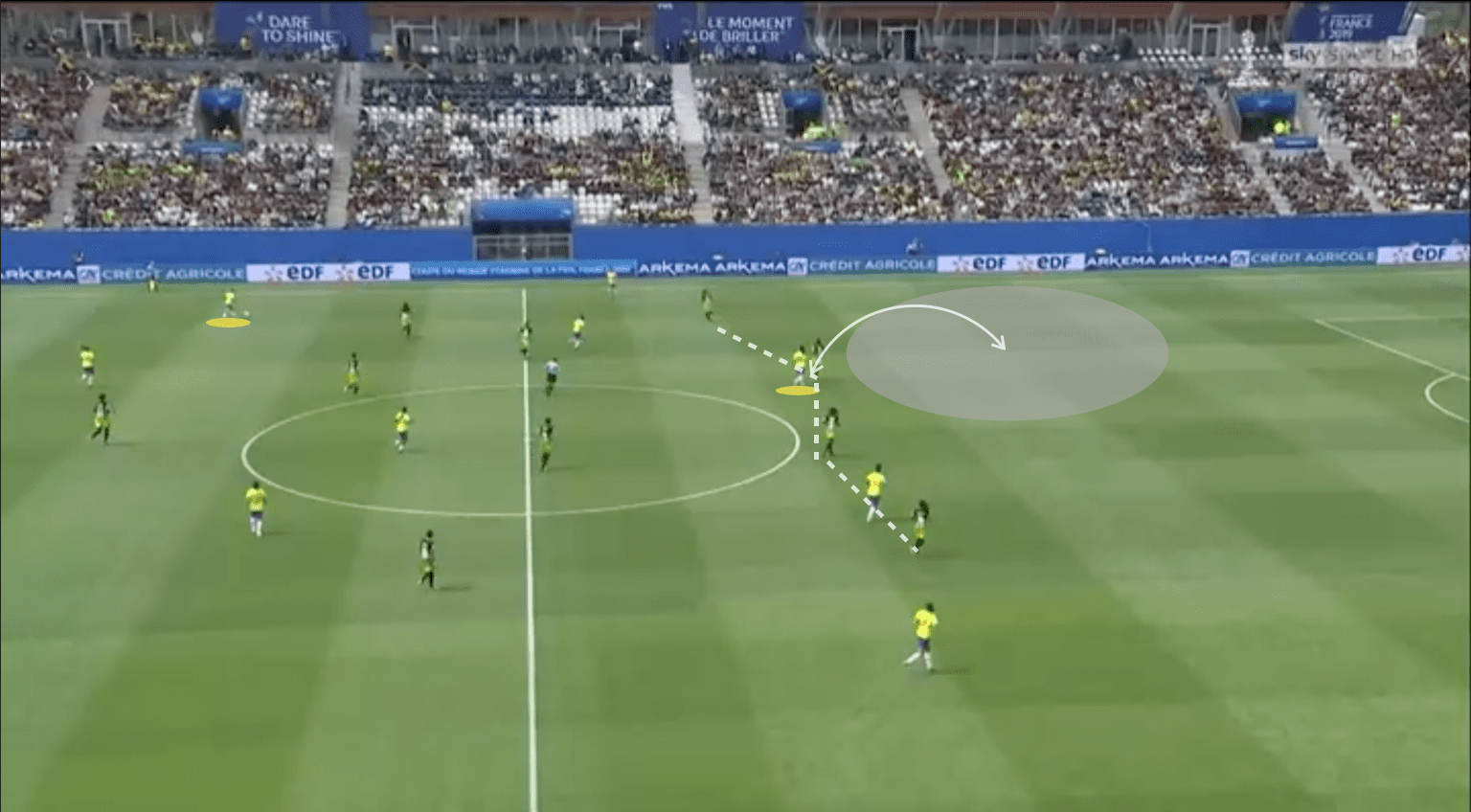
France’s systematic press and defensive high line are very similar to Jamaica. While their quality is much higher than Jamaica, and Brazil will have to work a bit harder to create goal scoring opportunities, Brazil have experience playing against a side similar to France. They know how to deal with the style of play, and how to exploit it as well.
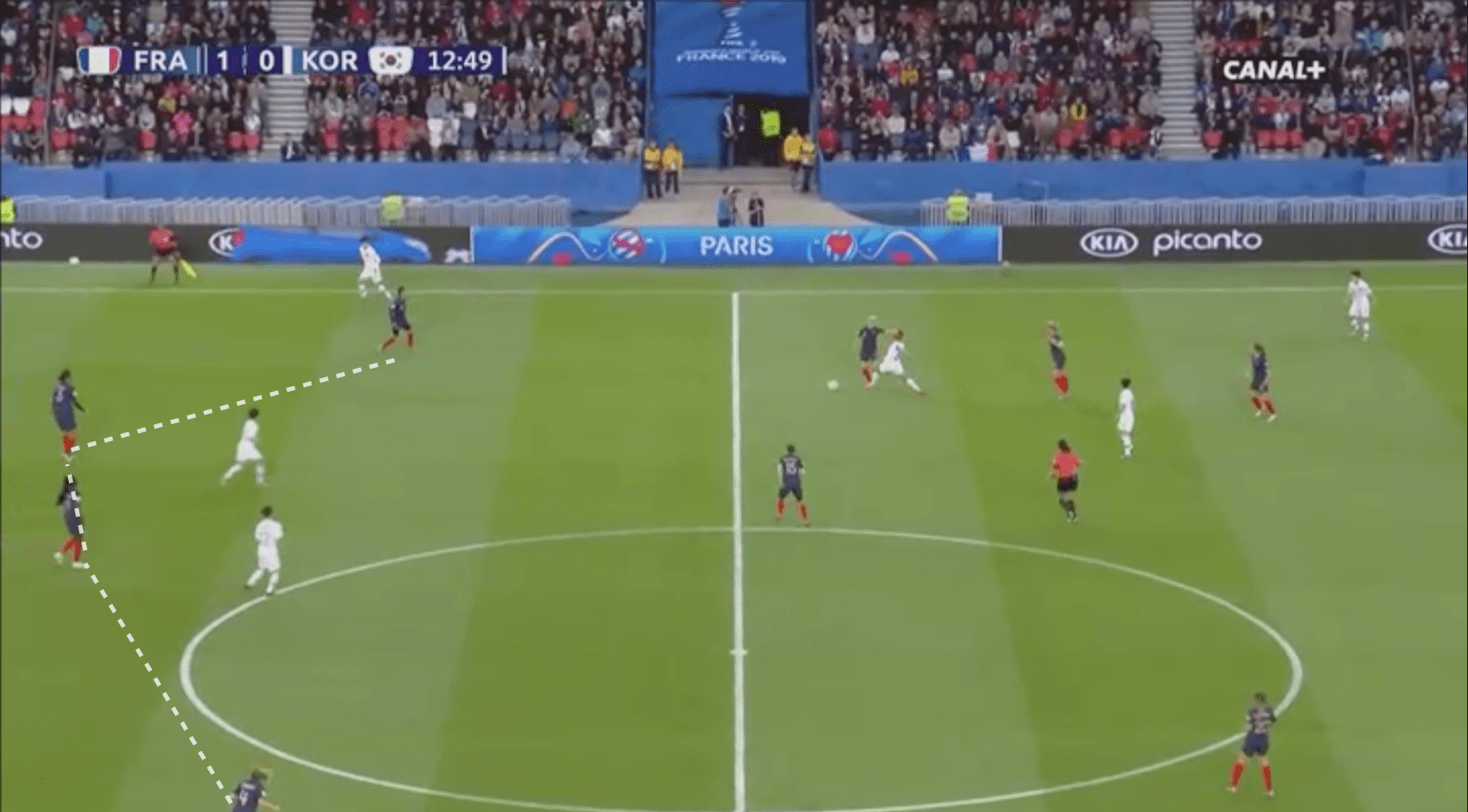
Another aspect of France’s style of play that Brazil can also use to their advantage is the space left by France’s fullbacks, Torrent and Majri. Both players, especially Majri, are often involved in France’s attack, overlapping with the wingers and acting as a passing option. Torrent does have a more defensive-minded approach, but she still likes to roam forward.
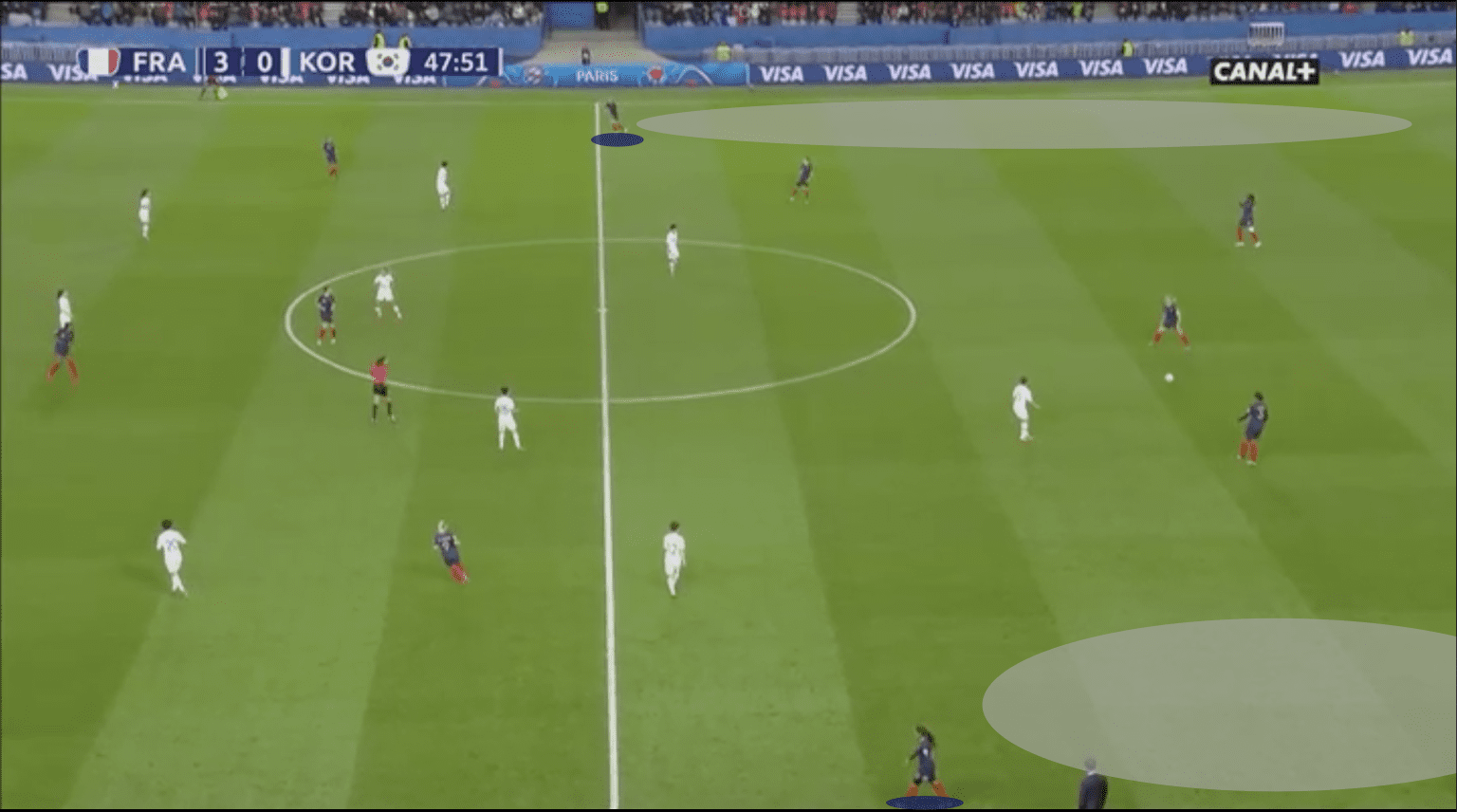
If Brazil can hit France on the break fast enough, they’ll create a situation in which they numerically have an upper hand. Brazil usually creates chances by having their wide players put crosses into the box for their two forward players, with, as mentioned above, midfielders running in late. If Brazil are quick enough, they can create a four versus two situation before Torrent and Majri have time to get back. As good as France’s centrebacks Renard and Mbock Bathy are, it will be difficult for both of them to be tasked with marking two players each. If Brazil use a counter-attacking strategy against France multiple times throughout the match, they are bound to eventually create some good goalscoring chances.
Final Thoughts
In this FIFA Women’s World Cup match, France will be dominant; they will be playing at home, and have a lot of pressure on them to succeed in this tournament. The tournament so far has shown that France is ruthless in their play, and have a goal set. Brazil must be patient during the match, and not get frustrated by France’s press, instead, calmly knowing when to exploit France, and doing it properly, as the chances they have will be slim. France’s previous game against Nigeria, which was won by a controversial penalty, showcased that France are not invincible. They often rely too much on their attacking threat from the wide areas, and if Brazil can exploit those areas properly, they’ll cause France problems. It promises to be an exciting game with several world class players competing in a major tactical battle for the world to enjoy.
If you love tactical analysis, then you’ll love the digital magazines from totalfootballanalysis.com – a guaranteed 100+ pages of pure tactical analysis covering topics from the Premier League, Serie A, La Liga, Bundesliga and many, many more. Buy your copy of the May issue for just ₤4.99 here, or even better sign up for a ₤50 annual membership (12 monthly issues plus the annual review) right here.

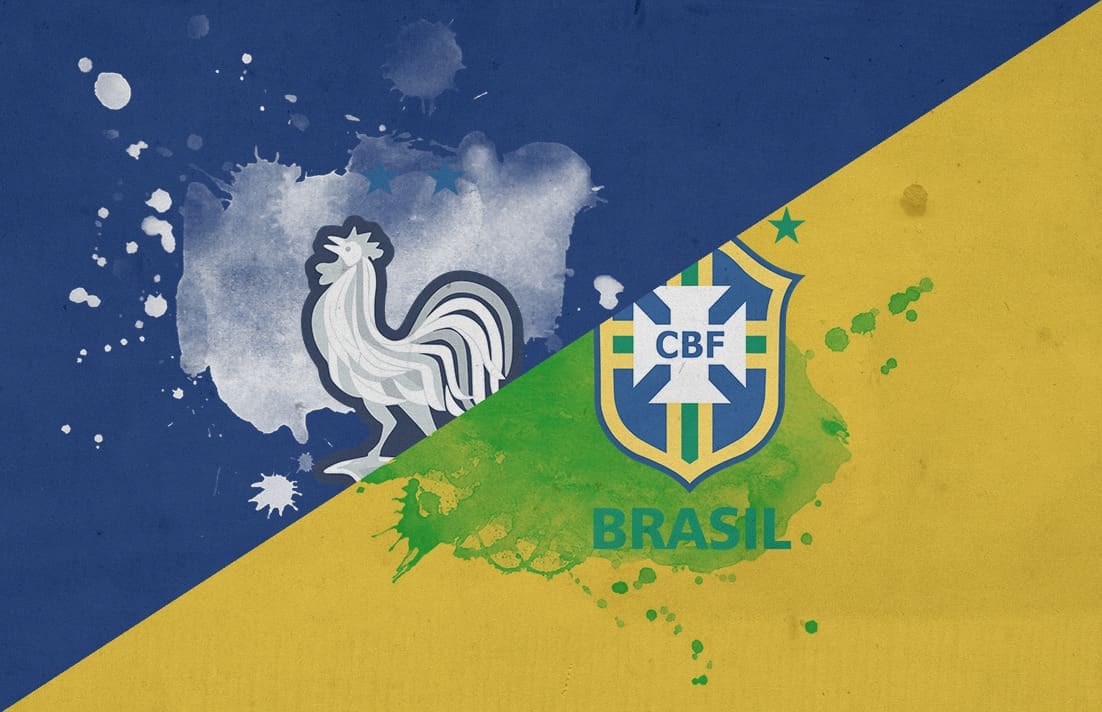




Comments